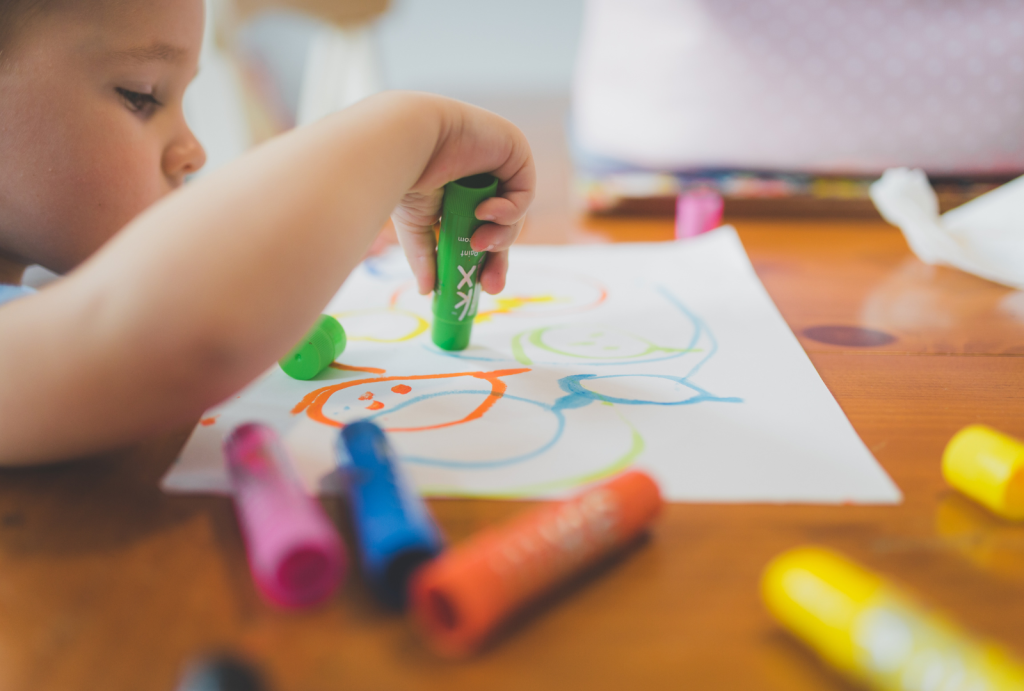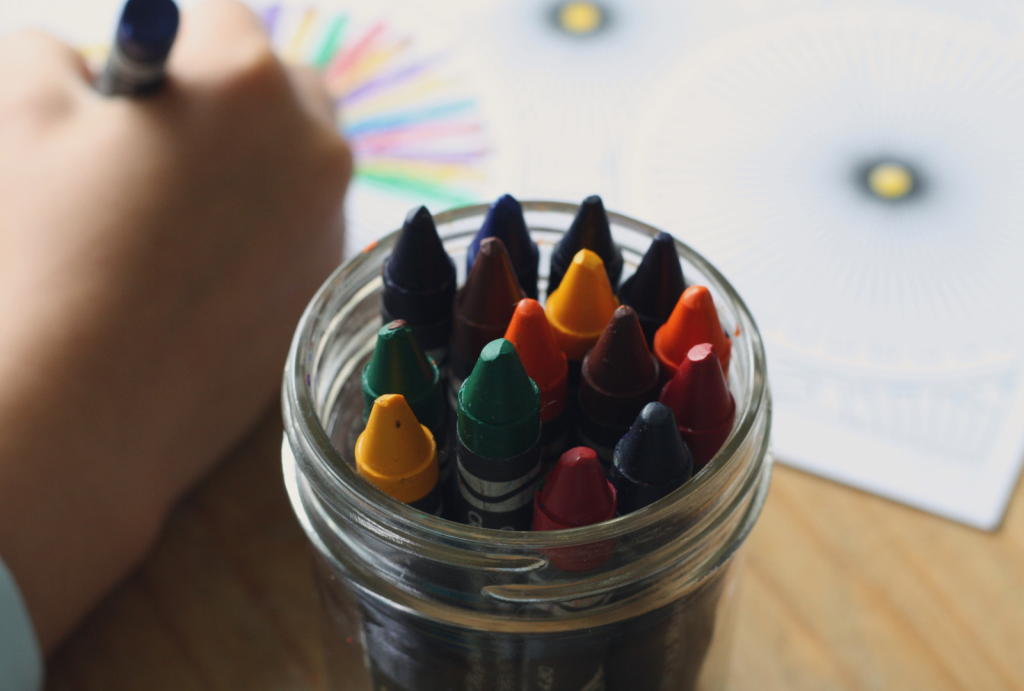Learning to color within the lines is an essential developmental milestone for children. It marks the beginning of more refined motor skills, improved focus, and attention to detail. While children naturally progress at different rates, parents and educators often wonder: at what age should a child learn to color within the lines? The journey to achieving this skill starts early, and various factors such as age, developmental readiness, and practice influence when a child can master it.
Understanding the Developmental Stages of Coloring
Coloring within the lines requires a combination of hand-eye coordination, motor skills, and cognitive development. A child’s ability to color within the lines doesn’t happen overnight but progresses through stages. Let’s look at the different stages and ages associated with this important skill.

Early Scribbling (Ages 1-2)
At the age of one or two, children typically begin their coloring journey with random scribbles. At this stage, they are primarily focused on exploring how to use crayons and experimenting with different colors. The focus here is on the sensory experience rather than creating structured art. They are building the foundation for future skills, but it is too early to expect them to color within the lines.
- Exploratory Stage: Children enjoy the feel of crayons on paper, experimenting with bold strokes and different colors.
- Motor Skill Development: At this age, children are developing their fine motor skills, which will later help them control their hand movements better.
Controlled Scribbling (Ages 3-4)
By the age of three or four, children start to develop more control over their hand movements. They may attempt to color in specific areas of the page but will still go outside the lines frequently. This stage is crucial for the development of hand-eye coordination and fine motor skills. Although children in this age range still have difficulty coloring within the lines, they are gaining better control and understanding of boundaries.
- Developing Precision: Children start to understand that shapes have boundaries, and they try to color inside them, although they often cross the lines.
- Motor Skills Strengthening: Their grip on the crayon becomes more refined, and they gain greater control over their strokes.
Coloring Within the Lines (Ages 5-6)
The ability to color within the lines usually emerges around the ages of five or six. At this point, children have developed stronger fine motor skills and better hand-eye coordination, allowing them to stay within the lines more consistently. However, it’s important to remember that some children may reach this milestone slightly earlier or later, depending on individual developmental readiness.
- Increased Focus: By this age, children can focus for longer periods, and this increased attention helps them color within boundaries.
- Cognitive Development: They understand the importance of following the lines and can consciously aim to stay within them while coloring.
Mastering the Skill (Ages 7+)
By age seven and beyond, children typically have mastered the ability to color within the lines. At this stage, they can refine their coloring techniques, including shading and adding intricate details to their work. The skill becomes second nature, allowing children to explore more complex art forms and coloring tasks.
- Refined Techniques: Children in this age group start adding more details, such as shading, patterns, and texture, to their coloring projects.
- Creativity and Precision: Coloring within the lines becomes a creative outlet, and children can use different techniques to express their artistic skills.
Factors That Influence When a Child Will Learn to Color Within the Lines
There is no strict age by which a child should color perfectly within the lines, as every child develops at their own pace. However, a few factors can influence when a child learns this skill:
1. Fine Motor Skill Development
Fine motor skills involve the use of small muscles in the hands, fingers, and wrists. These skills are essential for activities like coloring, writing, and using tools. Children who develop strong fine motor skills early may learn to color within the lines at a younger age.
2. Hand-Eye Coordination
Hand-eye coordination allows children to match what they see with their hand movements. The better a child’s hand-eye coordination, the easier it is for them to stay within the lines while coloring.
3. Cognitive Development
Cognitive development plays a role in a child’s ability to understand the concept of coloring within boundaries. As children’s cognitive abilities mature, they become more aware of how to control their movements and follow the lines.
4. Practice and Exposure
Children who have frequent opportunities to practice coloring tend to develop their skills faster. The more they practice, the more likely they are to color within the lines successfully. Providing children with coloring books, crayons, and drawing materials helps them hone their skills over time.
Why Coloring Within the Lines is Important for Child Development

Coloring within the lines is more than just an artistic milestone; it supports a child’s overall development in multiple ways. Here’s why this skill is so essential:
1. Development of Fine Motor Skills
As children learn to control their crayon and stay within the lines, they are strengthening their hand muscles, which are necessary for tasks like writing, cutting, and tying shoes.
2. Improved Focus and Concentration
Coloring within the lines requires sustained attention and patience. This activity helps children learn how to focus on a task for extended periods, a skill that translates to better performance in school and other areas of life.
3. Cognitive Growth
When children attempt to color within the lines, they are practicing problem-solving, decision-making, and critical thinking. These cognitive skills are essential for academic success and everyday life.
4. Boost in Confidence
Successfully coloring within the lines gives children a sense of accomplishment, boosting their confidence and self-esteem. They feel proud of their work and motivated to tackle more challenging tasks.
Encouraging Your Child to Color Within the Lines
While it’s important not to pressure children, parents and educators can encourage children to practice coloring within the lines in a fun, supportive environment. Here are a few tips:
1. Provide Age-Appropriate Materials
Use coloring books with larger shapes for younger children and gradually introduce more detailed images as they grow older. This gives them a better chance to succeed in coloring within the lines as their skills improve.
2. Encourage Without Pressure
Celebrate progress without criticizing mistakes. Positive reinforcement helps children feel more confident and motivated to keep improving their coloring skills.
3. Offer Plenty of Practice
The more opportunities children have to practice, the better they will get at coloring within the lines. Provide a variety of coloring activities to keep things interesting and engaging.
Conclusion
At what age should a child learn to color within the lines? While most children start developing this skill around the ages of five to six, the exact timing varies depending on the child’s fine motor skills, hand-eye coordination, and cognitive development. Encouraging children through practice and providing the right tools will help them master the skill at their own pace, setting the foundation for more complex tasks in the future.
FAQs:
At what age should a child learn to color within the lines?
Most children start learning to color within the lines around ages five to six. However, individual development varies, and some children may reach this milestone earlier or later.
Why is coloring important for children?
Coloring helps children develop fine motor skills, improve focus, and enhance their creativity. It also allows them to practice emotional expression and boosts their self-confidence.
What are the benefits of coloring?
The benefits of coloring include improved hand-eye coordination, enhanced cognitive development, and strengthened fine motor skills. It also helps with emotional regulation and provides a sense of accomplishment.
Why is color recognition important in early childhood?
Color recognition helps children with cognitive and language development. It allows them to categorize objects and improves their understanding of the world around them.
What is the use of color for kindergarten?
In kindergarten, coloring is used to develop fine motor skills, hand-eye coordination, and creativity. It also helps children learn how to focus, follow instructions, and express themselves artistically.
